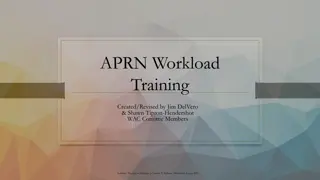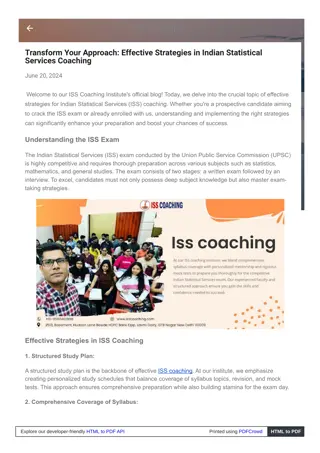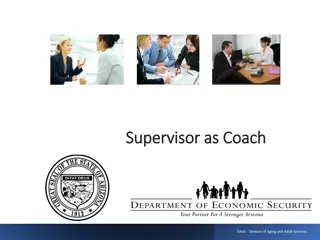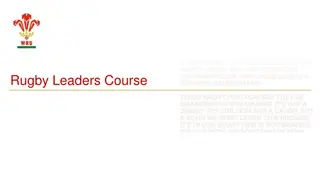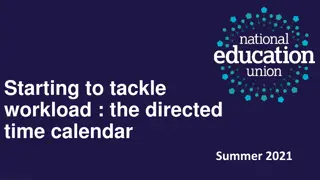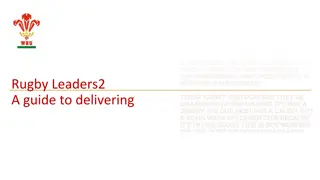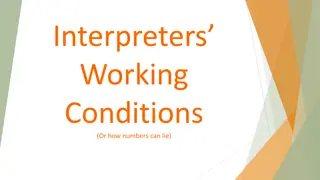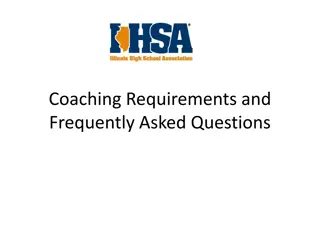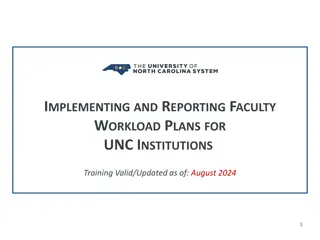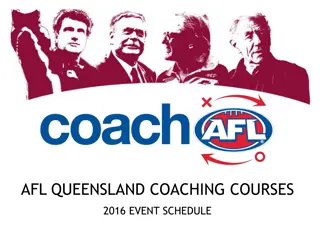Coaching Your Managers to Reduce HR Workload and Increase Employee Effectiveness
Learn how to encourage managers to take a coaching approach, utilize the Four-step Situational Coaching Model, and effectively address employee performance issues. This coaching program aims to decrease HR workload, boost management credibility, enhance motivation, and improve organizational effectiveness.
Download Presentation

Please find below an Image/Link to download the presentation.
The content on the website is provided AS IS for your information and personal use only. It may not be sold, licensed, or shared on other websites without obtaining consent from the author.If you encounter any issues during the download, it is possible that the publisher has removed the file from their server.
You are allowed to download the files provided on this website for personal or commercial use, subject to the condition that they are used lawfully. All files are the property of their respective owners.
The content on the website is provided AS IS for your information and personal use only. It may not be sold, licensed, or shared on other websites without obtaining consent from the author.
E N D
Presentation Transcript
Coaching Your Managers to Coach Reduce HR Workload and Increase Employee Effectiveness Dennis Wade dennis@ppldev.com
2 Overview Objectives Encourage managers to take a coaching approach Learn the Four-step Situational Coaching Model Learn how to identify a problem and gain commitment to a plan of action Agenda 1. Overview 2. The Four-step Situational Coaching Model 3. Coaching the manager 4. Wrap-up
3 HR Dilemmas Managers aren t doing their job of addressing employee performance. OR Managers aren t doing their job of addressing employee performance very well. We have the opportunity to: Decrease HR workload & stress Increase the credibility of management Increase motivation & improve morale Increase individual and organizational effectiveness
4 Coaching is helping others to achieve their goals by guiding rather than telling. Supervising Focuses on getting things done Directing by telling Coaching Focuses on developing people Guiding by asking
5 Before coaching 1. Evaluate the situation Coaching 2. Describe the situation Introduce the situation in a non-threatening way Identify the problem or opportunity Gain agreement there is a problem or opportunity 3. Plan a change Collaborate on a solution Ensure understanding Gain commitment to a plan 4. Revisit the plan Set a date Be supportive Situational Coaching Model
6 Coaching Opportunities Coach an employee when he/she needs: OJT (on-the-job training) Support Motivation Alignment Realignment
7 Situational / Flexible Step 3 coaching varies by situation Encouragement / Support Share some encouraging words Help employee discover his/her own confidence by asking how he/she has dealt with a tough situation in the past Motivation Explore ideas that will help the employee meet his/her potential: Would the employee take on new tasks and responsibilities? Would the employee serve as a role model for other team members? Alignment Collaborate on a change by asking : What ideas do you have for improving performance? Realignment Work on a solution by asking: What is getting in the way of your success?
8 Describe the Situation I want to help managers effectively address employee performance issues before coming to HR. If you could effectively address your own employee performance issues, what would that do: for you? for your employees?
9 Plan a Change Do most employees respond better to telling or guiding? What are the advantages of discovering your own solution? I want to share an approach to addressing performance issues that is usually better than telling. Share the coaching model What concerns do you have about this approach? Would you like to work together on Dave s tardiness issue?
10 Revisit the Plan When is a good time in the next two weeks to follow up on Dave s situation? Don t hesitate to ask questions. When revisiting: How did it go with coaching Dave? Would you do anything differently? How could you apply this coaching approach to other performance issues?
11 Wrap-up Final questions or comments? Contact information dennis@ppldev.com Thank you!


